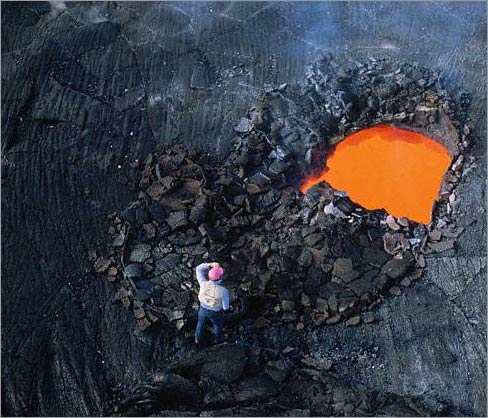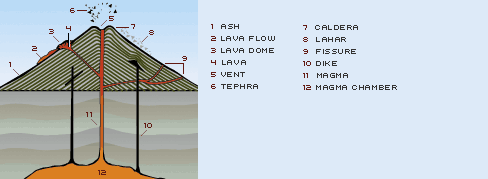|
Magma
Magma is molten or partially molten rock beneath the Earth's
surface. When magma erupts onto the surface, it is called
lava. Magma typically
consists of a liquid portion (often referred to as the melt); a
solid portion made of minerals that crystallized directly from the
melt; solid rocks incorporated into the magma from along the conduit
or reservoir, called
xenoliths or
inclusions; and
dissolved gases. Magma collects inside a volcano's magma chamber
before it erupts (see diagram).
Left: Magma from the belly of Kilauea in Hawaii collects as
it flows out to the Pacific Ocean.
|



